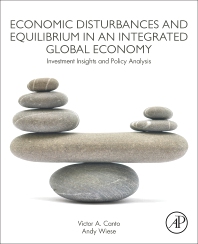The Framework
The critical variable in meeting an investment goal is the distribution of assets between classes. That is no secret. But achieving success in asset allocation is easier said than done. We believe the ValueTiming™ framework is a better framework for asset allocation than what most investment firms offer today. In short, where most plans tend to be rigid, flexibility is what investors most need. Where the majority of plans limit choices, nothing should be taken off the table. Investors should have the best framework in which to make their decisions.
Of course, every investment plan is set up so that the investor comes out ahead. But you can do better than just come out ahead.
Investments are made to meet the goals and lifestyle needs of the investor and not necessarily to beat industry benchmarks. But making an allocation decision between equities and bonds or large- and small-cap stocks requires not just a return-assumption, but also a conviction in the likelihood of success. That's why the asset-allocation process needs to be probability based. First, the probabilities of asset-class returns need to be formulated. Next, those probabilities need to be applied to an investor's long-term goals, producing a recommended asset allocation. Finally, this allocation needs to be run through a quantitative framework that overweights the opportunistic sectors and underweights the overvalued ones. The cyclical value timing approach differentiates itself in additional important ways. The probabilities for cyclical allocation are derived from, and are related to, the overall economic environment and the outlook of the investor. If probabilities and/or allocations do not match an investor’s outlook, either the allocations or the outlook must change in order to align the two, and more than likely the allocations will be changed to fit an outlook. This is an important characteristic of the ValueTiming™ strategy. It says that cyclical allocations are intuitive and that investors can see the adjustments that need to be made to their portfolios. There is no need, in other words, for investors to rely on black-box results before making their allocation decisions. Nor is there a need for investors to have knowledge of advanced statistics and matrix algebra.
All this ensures that there are no unintended bets made in a portfolio.
The ValueTiming™ approach minimizes the caches of unintended bets in the asset-allocation process. While it does not guard against undesirable outcomes, it protects investors from being wrong because of unintended outcomes. While all investors would prefer not to be wrong, We would rather be wrong because We made the wrong choice and not because We got blindsided by an unintended bet. As with a traditional strategic asset allocation, the value timing approach is flexible enough and robust enough to accommodate differences in risk tolerances, investment objectives, and other investor constraints. But it's also flexible enough and robust enough to merge with, enhance, or outright revolutionize the approaches of various types of asset management firms.
Previous | Next


